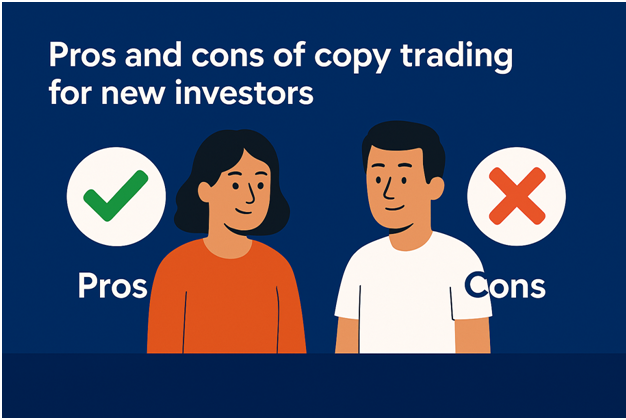
Copy trading lets new investors mirror the trades of experienced pros automatically. On platforms like eToro, Bybit, or Binance, you select a trader, and their actions – buying, selling, or holding – sync to your account. In 2025, with crypto markets swinging 5-10% daily, this offers a low-effort entry for beginners.
The copy trading market grew 47% in 2024, hitting $50 billion in assets managed. It’s perfect for those lacking time or expertise, automating trades across stocks, forex, or crypto. Platforms provide stats to pick traders, but success isn’t guaranteed.
Why does it appeal? It lowers barriers, letting novices tap pro strategies while learning market dynamics.
Key Benefits for New Investors
Accessibility is a major draw. You don’t need to master technical analysis – just choose a trader with a solid record. Platforms like eToro are user-friendly, letting you start with $100. This opens markets to anyone, no PhD required.
It saves time. Trades execute automatically, freeing you from constant chart-watching. Diversification comes easy – follow multiple traders across assets to spread risk. Learning happens too, as you observe pro strategies.
Profit potential is real. Top traders on Bybit boast 80%+ win rates, with 12-20% annual returns in 2024. For beginners, it’s a low-effort way to chase gains.
Risks and Drawbacks to Know
Success depends on the trader. Even pros lose – 80% of CFD accounts on eToro lose money due to poor picks or market shifts. Past performance isn’t a crystal ball.
Control is limited. You set risk levels, but the trader calls the shots. Fees sting – eToro charges 0.5-2% per trade, Bybit has spreads. These cut profits if unchecked.
Over-reliance is risky. Copying without learning stunts growth, leaving you dependent. Volatility, like October’s 12% crypto dip, can wipe out gains fast. Always have an exit plan.
Strategies to Succeed in Copy Trading
Choose traders wisely. Check verified win rates (80%+), drawdowns, and trade history on platforms like Binance. Diversify across 2-3 traders to balance risk – don’t bet on one star.
Manage risks tightly. Set stop-losses at 5-10% below entry, cap investments at 1-2% of capital. Monitor fees – high spreads erode returns. Use demo accounts on eToro to test first.
Learn from the process. Study copied trades to understand market signals, like RSI or news triggers. Platforms offer stats – track win rates weekly to refine your picks.
For crypto, follow traders active in ETH or BTC. October’s tariff scare showed pros buying dips, a tactic you can mirror with discipline.
Is Copy Trading Worth It for You?
Copy trading balances opportunity and risk. It’s ideal for beginners seeking exposure without deep knowledge, but losses hit hard – 80% of retail accounts lose in volatile markets. Platforms like Bybit make it seamless, yet fees and dependence demand caution.
The market’s growing – $50 billion in 2024 signals demand. For 2026, expect AI-driven traders to boost accuracy, but volatility stays. Start small, cap at 5% of your portfolio, and learn.
| Aspect | Pros | Cons |
| Accessibility | Easy entry, $100 start, no expertise needed | Dependent on the trader’s skill, no guaranteed wins |
| Time | Saves hours, automated trades | Limited control over trade decisions |
| Learning | Observe pro strategies, build skills | Over-reliance risks stunting growth |
| Profit Potential | 12-20% returns with top traders | 80% CFD accounts lose money |
| Risk Management | Diversify across traders, set stops | Fees (0.5-2%) and volatility eat gains |
Is it for you? If you’re patient and risk-aware, copy trading’s a smart start. Pick vetted traders, stay disciplined, and learn – it’s a tool, not a shortcut.

